Group Digital Presentation on Closing the Gap Strategy - HEALT2114
VerifiedAdded on 2023/06/07
|12
|608
|396
Presentation
AI Summary
This presentation provides an overview of the 'Closing the Gap' strategy, a government initiative aimed at reducing disadvantage among Aboriginal and Torres Strait Islander people. The presentation focuses on the target of halving the gap in employment by 2018, discussing its significance, historical context, and associated social and cultural issues. It explores the financial, health, and educational benefits of employment, as well as the historical factors contributing to unemployment, such as limited market opportunities, discrimination, and inadequate training. The presentation highlights the importance of addressing employment gaps for health professionals, examining how unemployment impacts health awareness, cultural competence, and person-centered healthcare. It includes data on employment rates, gender disparities, and future projections, along with a discussion of various programs designed to improve indigenous employment. The presentation concludes by emphasizing the need for career-based education, employment services, and increased community awareness to achieve sustainable improvements in indigenous employment.
1 out of 12
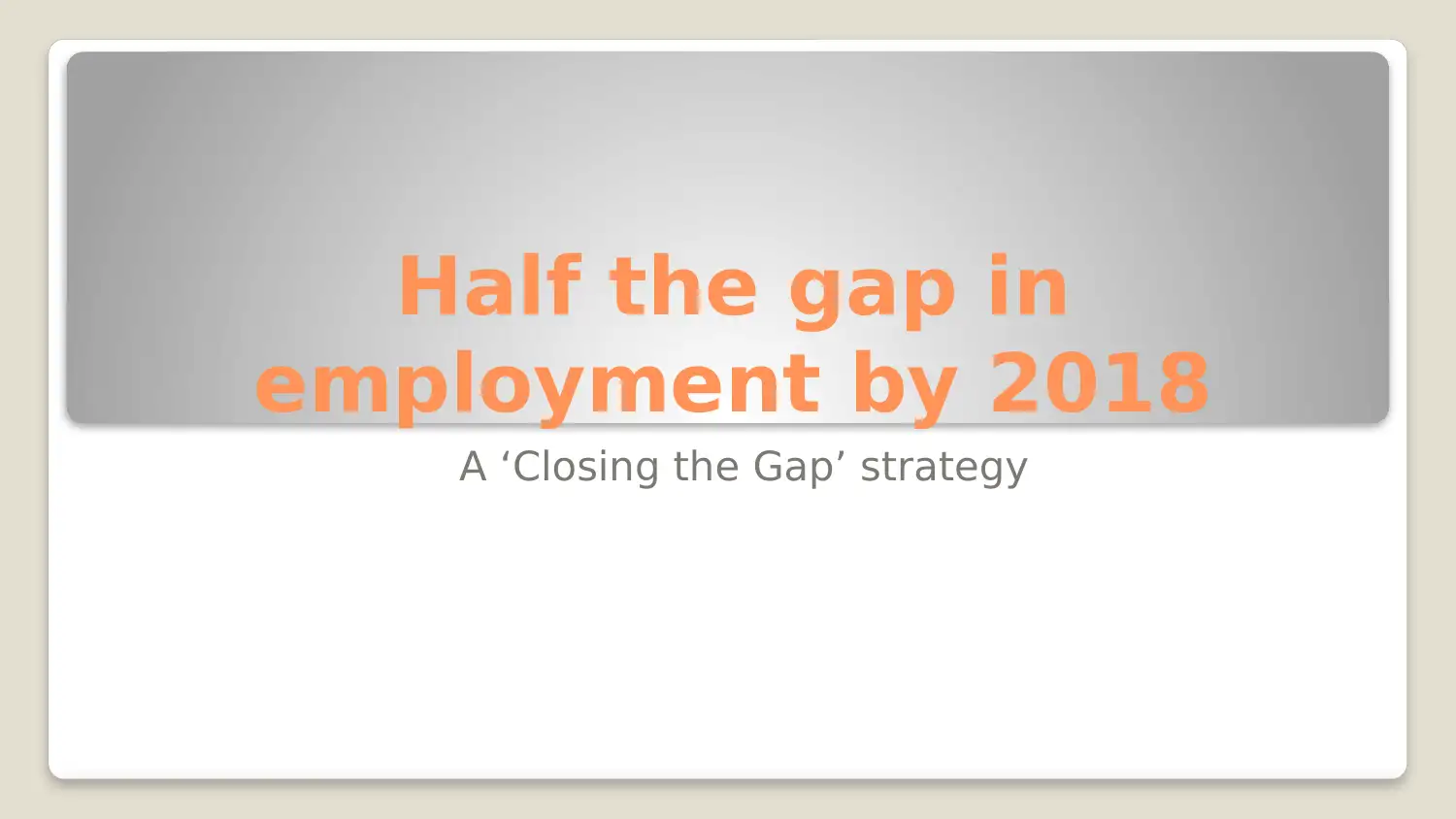
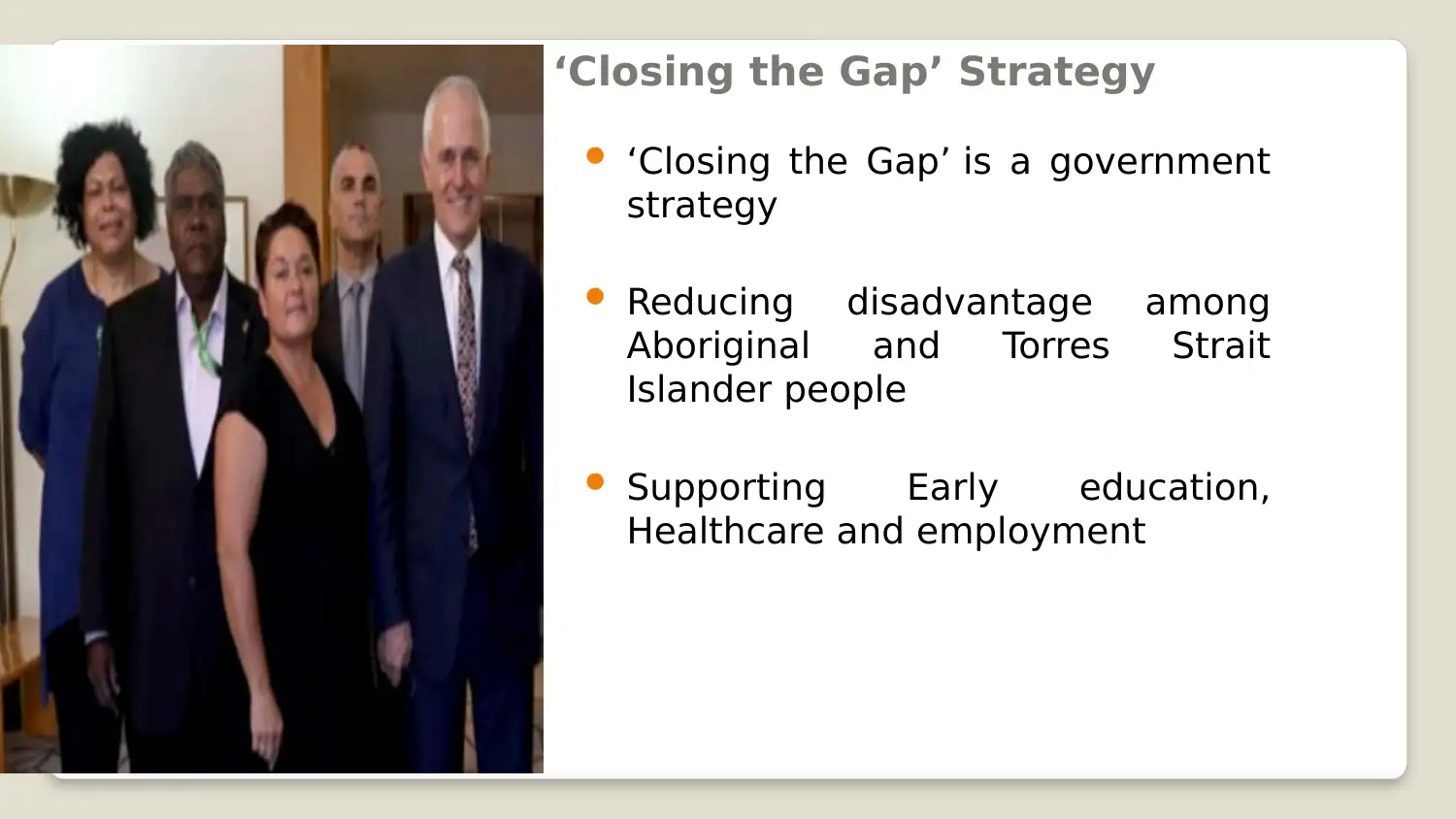
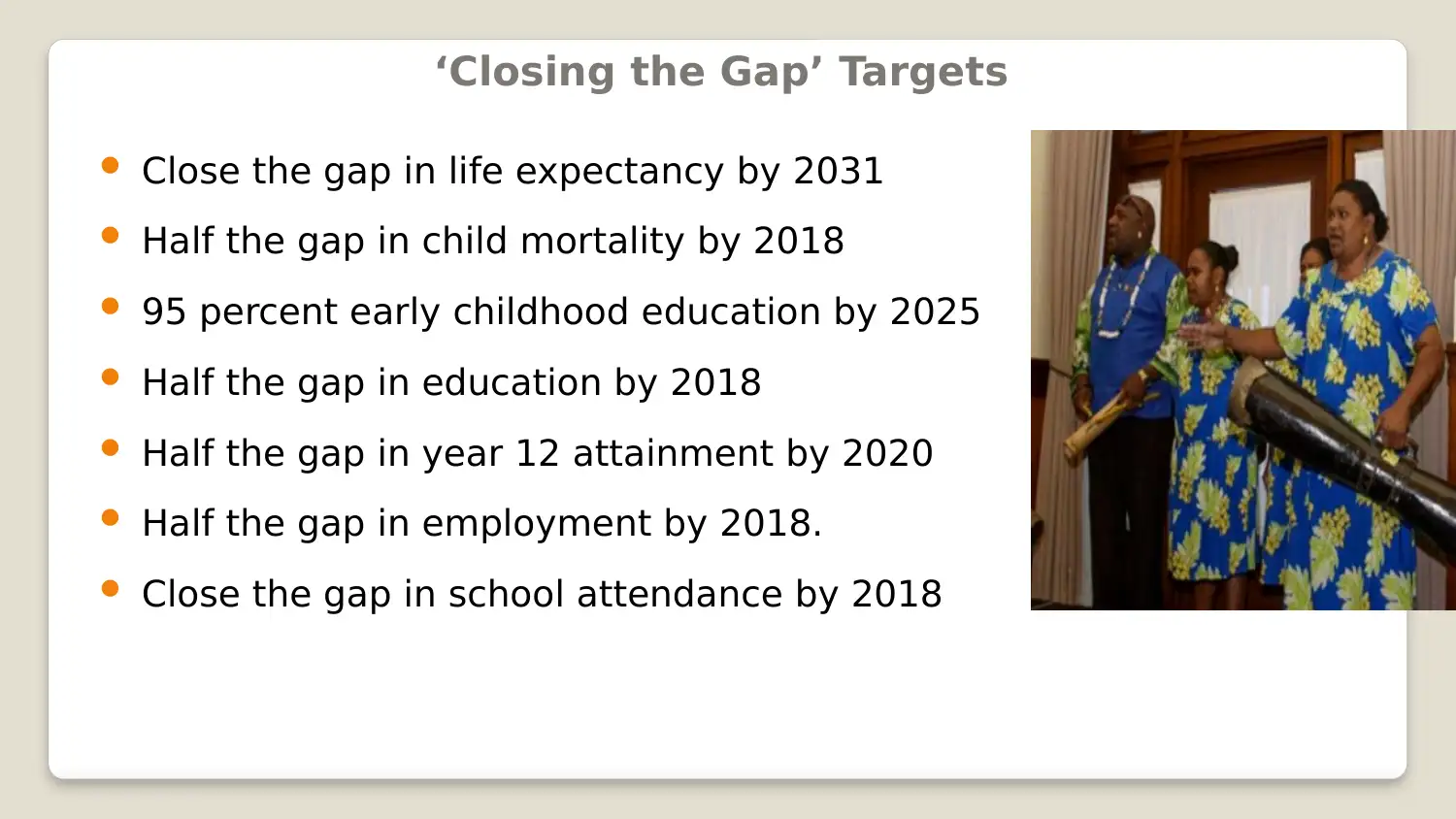

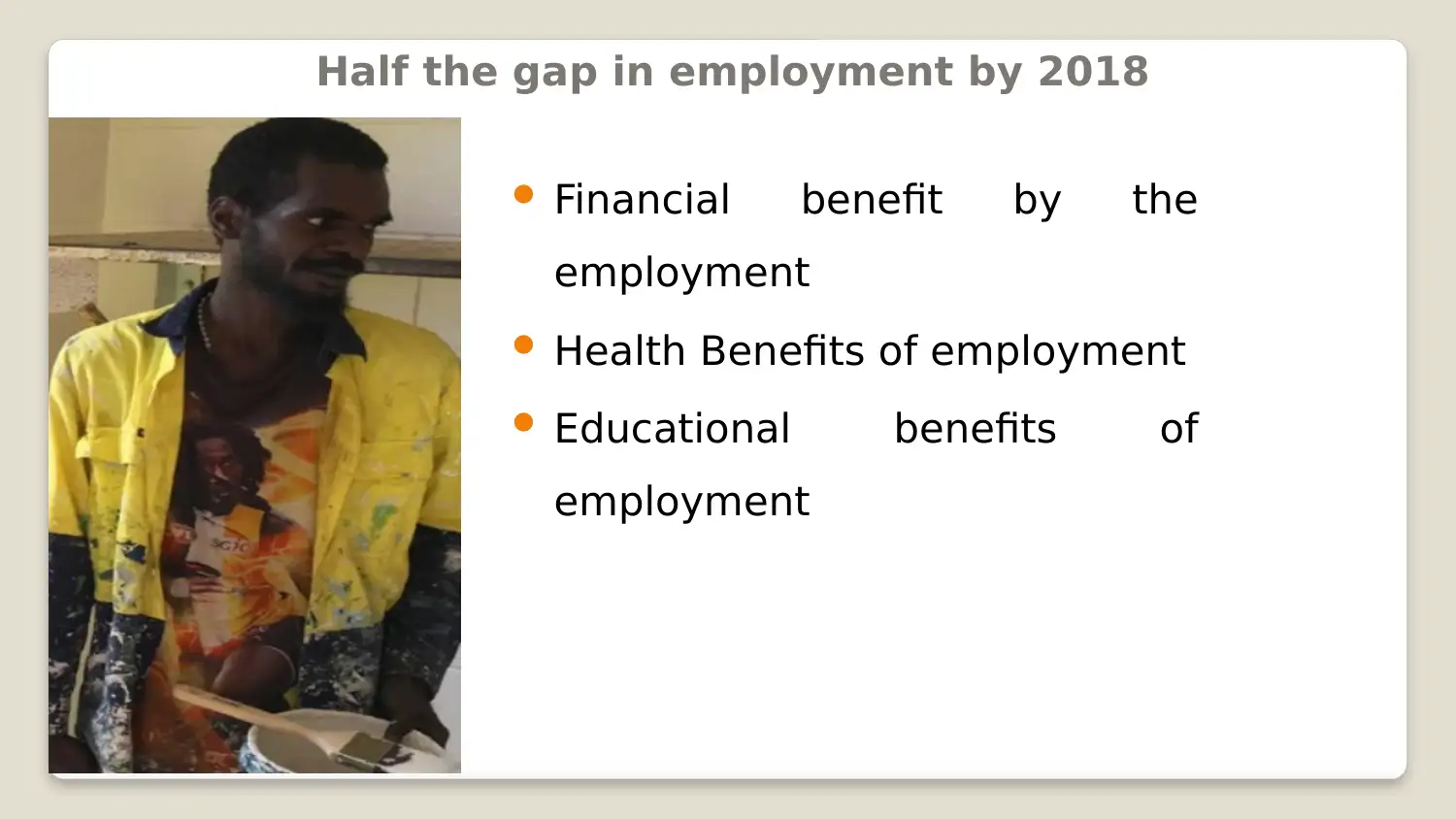
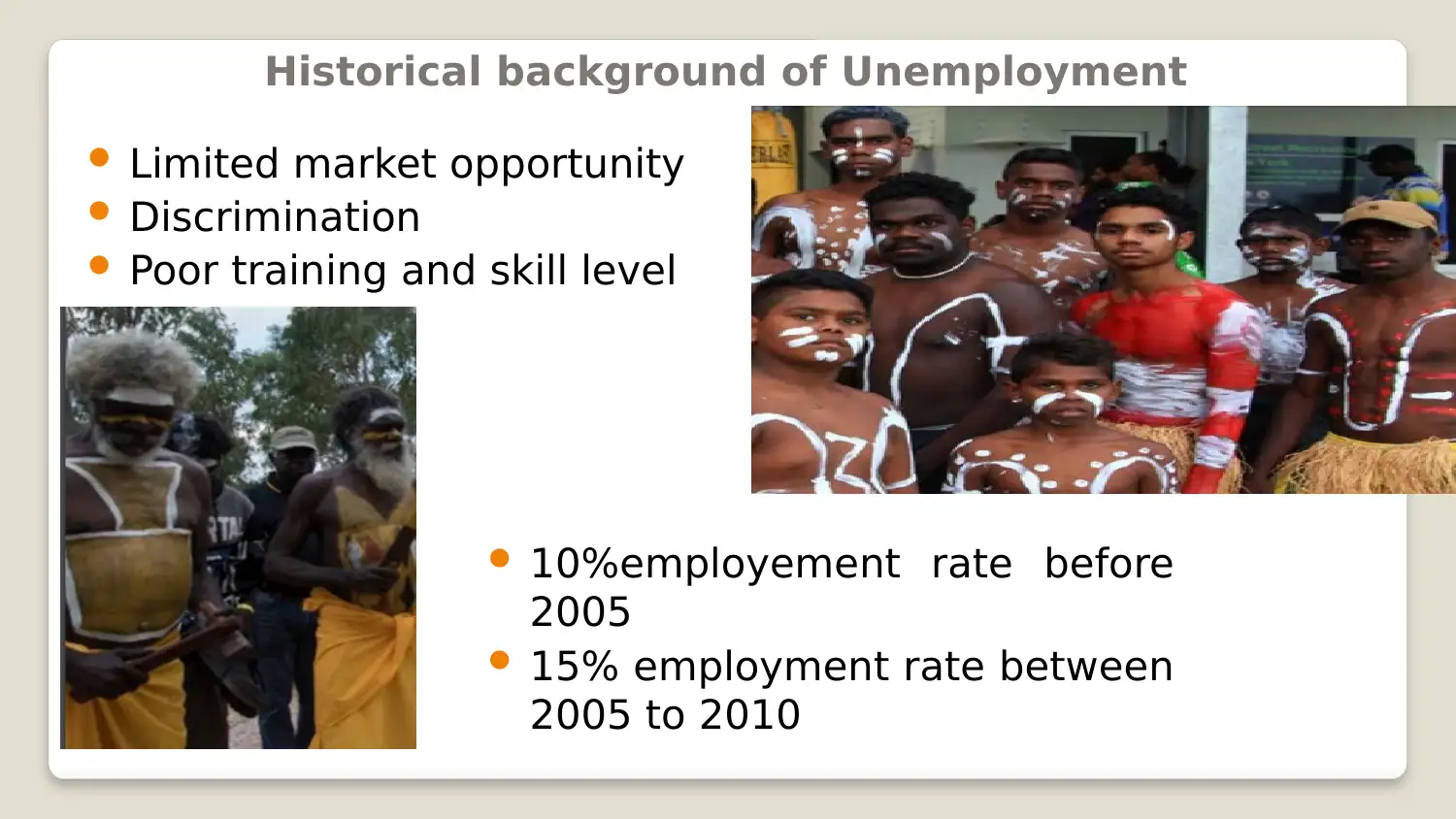
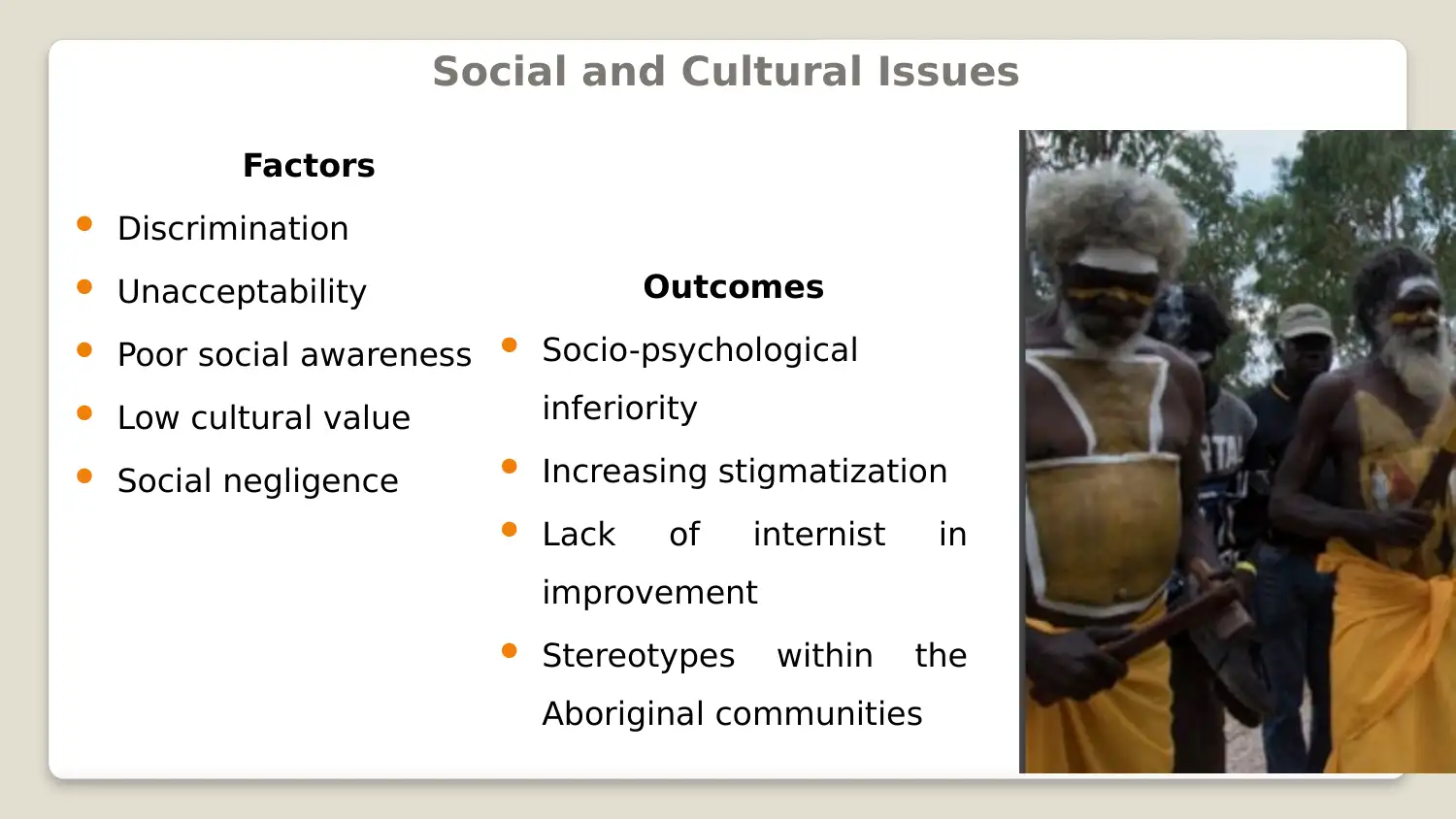
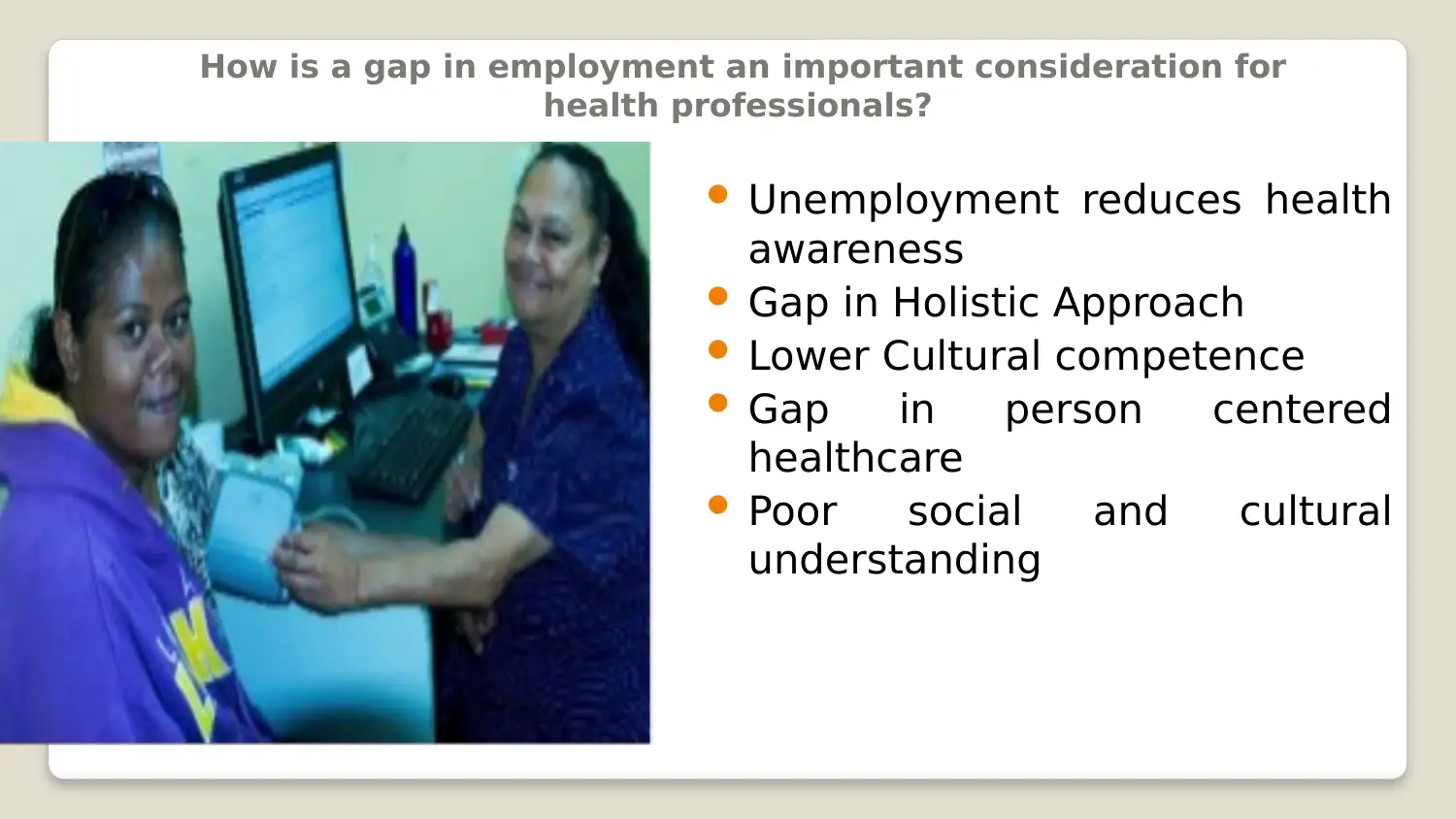
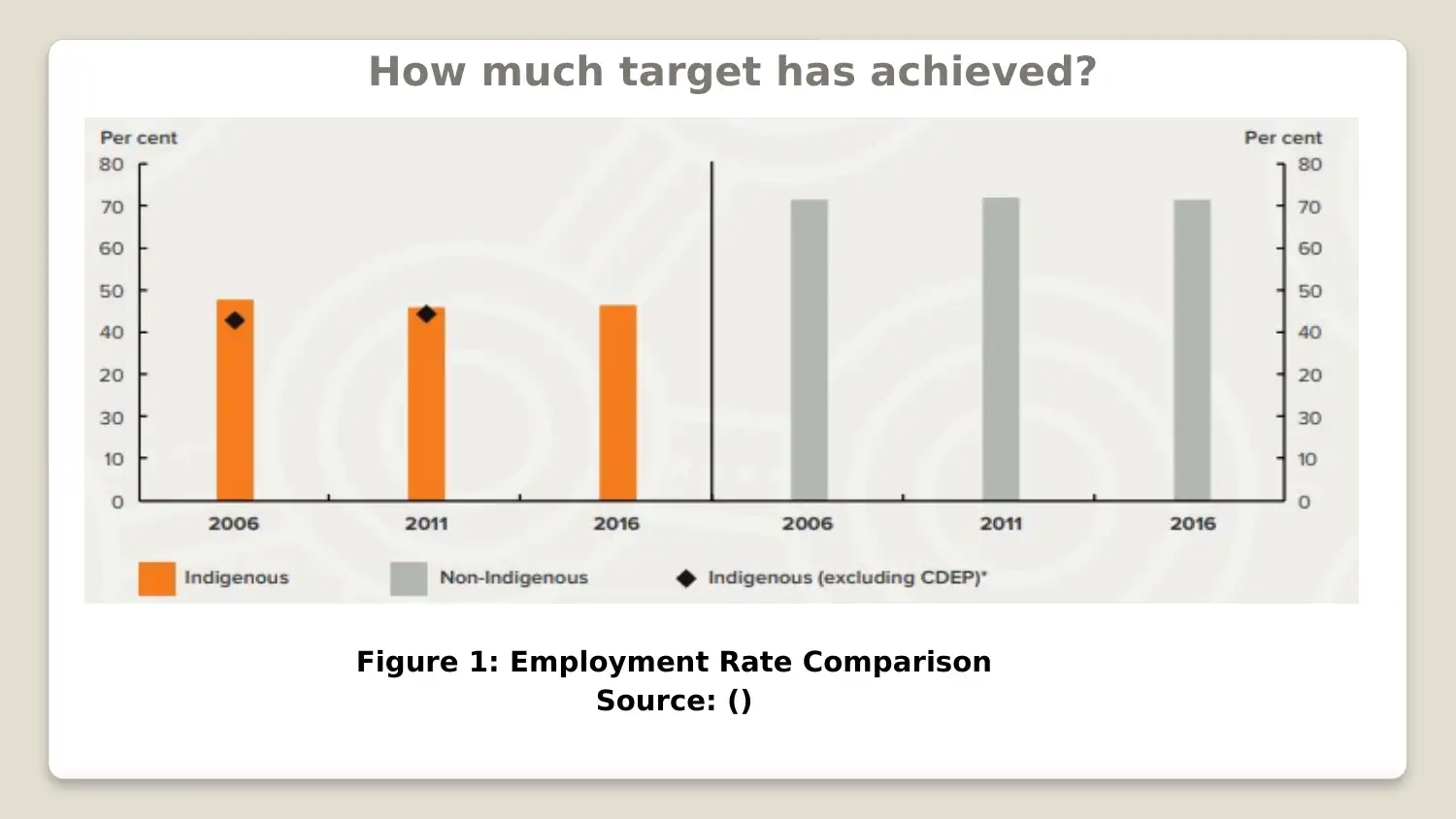
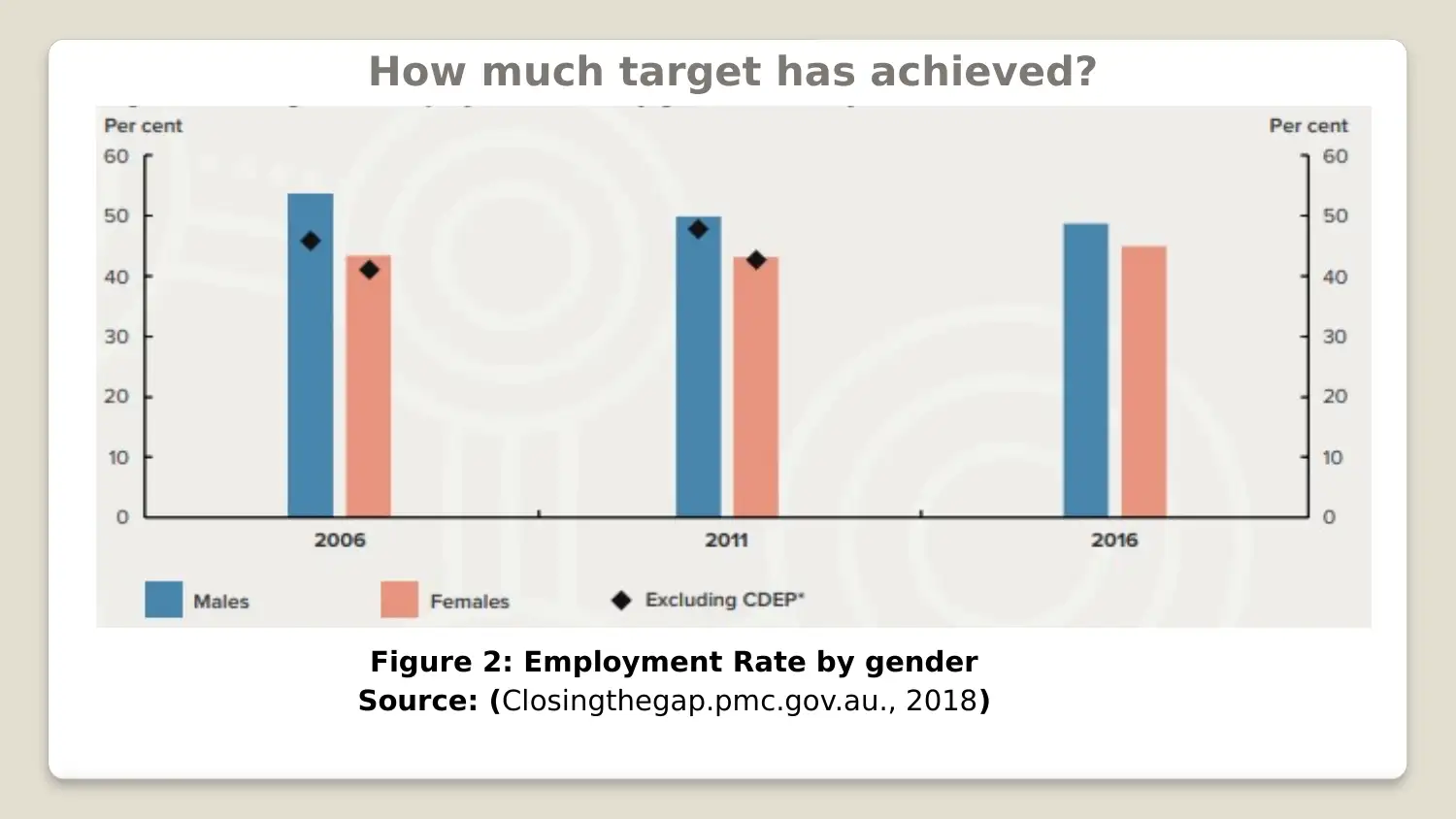
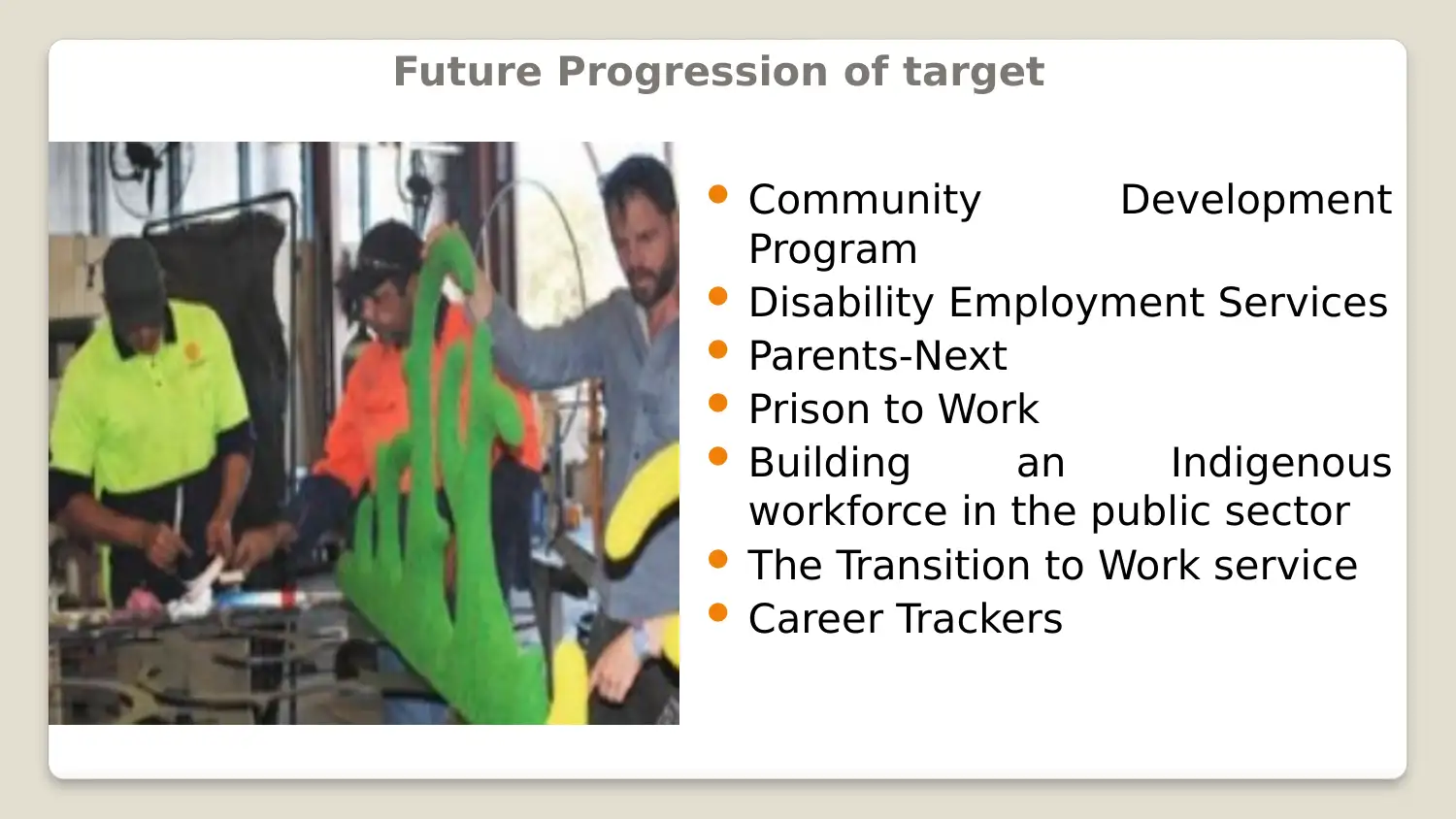
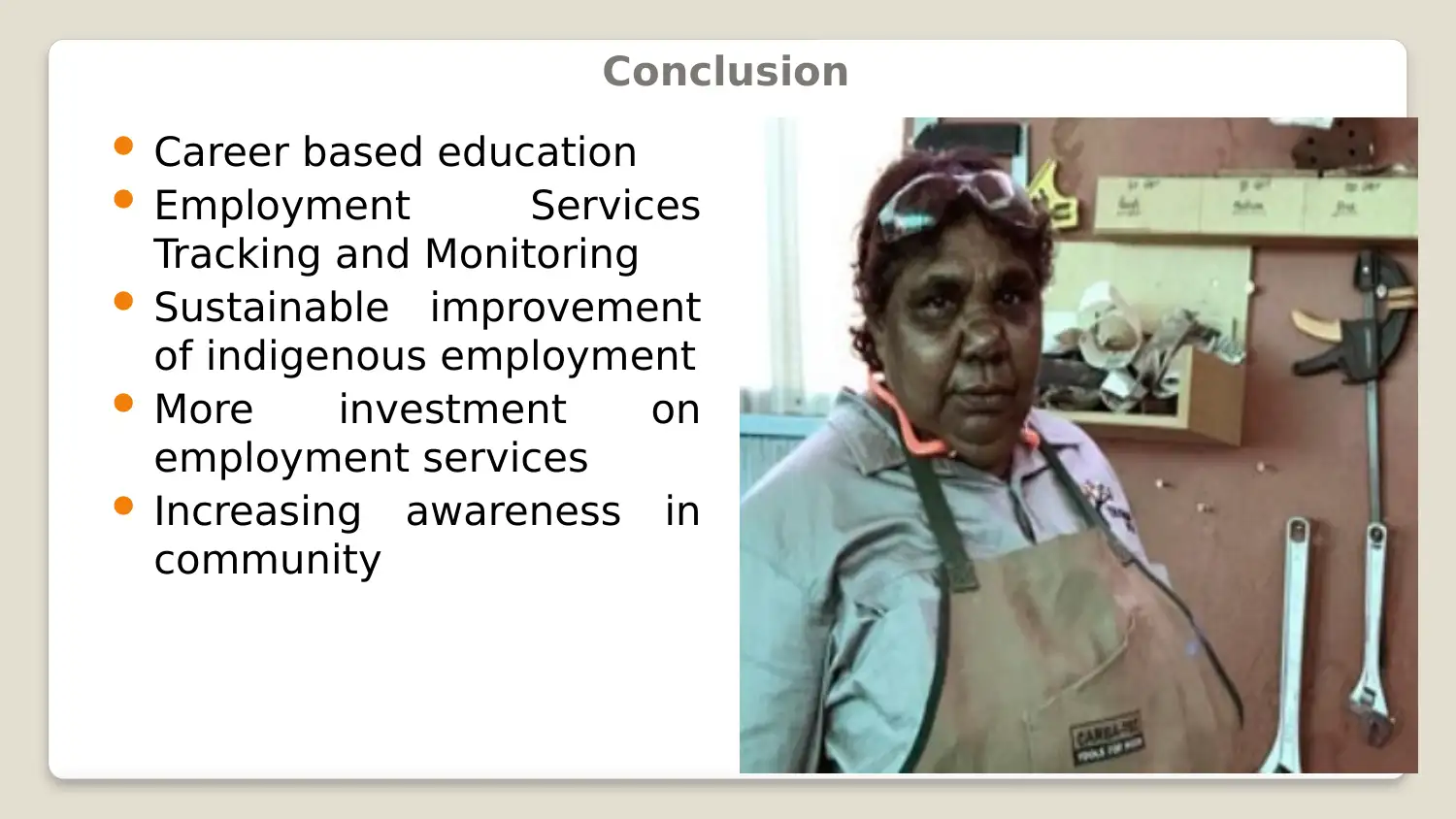
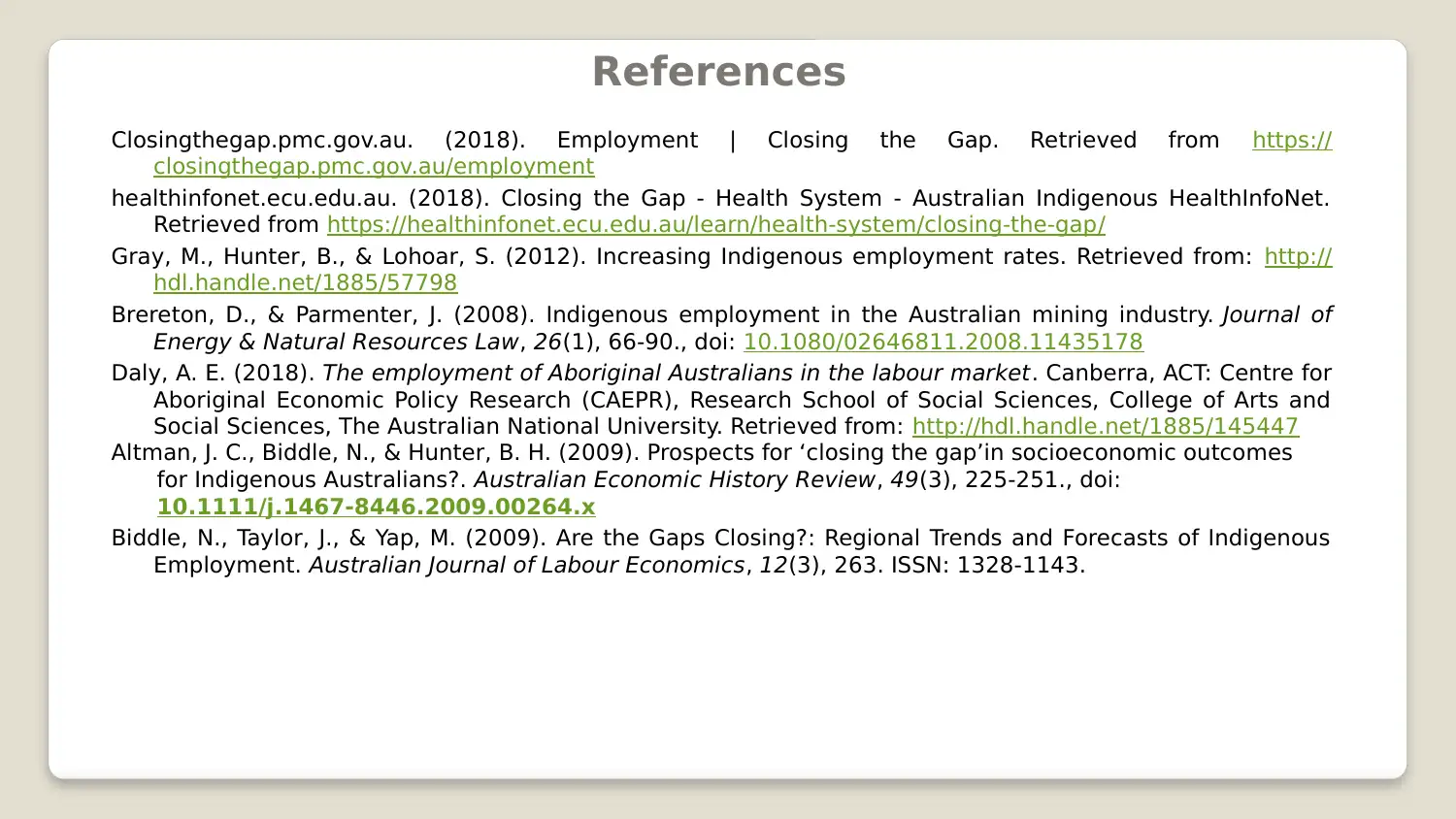






![[object Object]](/_next/static/media/star-bottom.7253800d.svg)